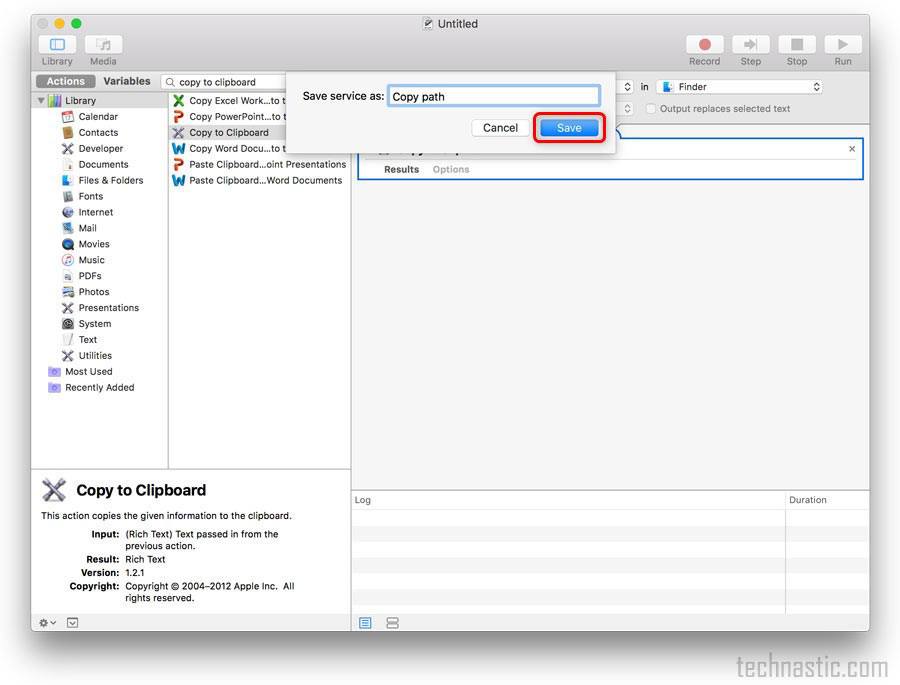

Mac users who are searching for specific file type and file format matches on their computer can make the job dramatically easier by issuing proper search operators to the Find functions in Mac OS X. Should you have any issue following this guide, make sure you comment below or get in touch with us. Now that you know it, make sure you use it and reduce the stress of memorizing file path. But maybe Apple had some other thoughts on it. This feature didn’t need any technical know-how, and it should have been available to all Mac users by default instead of manually doing it. Open Finder → Use the combination of Option(⌥) + Command( ⌘ ) + P. Viewing a File path is even more easy using a Keyboard shortcut.
MACOS GET FILE PATH FULL
View Full File Path in Finder on Mac Using Keyobard Shortcut If you ever wish to hide the path again, Simply click on “Hide Path Bar.” To make sure everything was done right, navigate through different folders and notice the path being displayed in that bar. Now you can see a small bar pops-up at the bottom of the Finder. All you need to do now is to click on “Show Path Bar.” Now from the Finder menu at the top, click on View. To make it even simpler, we have prepared the guide with steps and images to help you out, cruise around.
MACOS GET FILE PATH HOW TO
We will explain how to reveal file path in the Finder on Mac to know the exact location of a file or folder that you are viewing currently (If you wish to copy file/folder path from Mac finder, jump here.) The process is quite simple and will take little more than a couple of steps. That’s precisely what we are going to discuss today. Besides the essential functions that you see in the Finder, there are specific handy tools that can ease your file and folder navigation further.

It will let you create a custom service on your machine.Finder on Mac is one of the most comfortable ways to get around your Mac and navigate through files and folders.

In fact, all it requires you to do is drag and drop an action from here to there and you have your service ready with Automator. That may sound too programmatic but doing so in practice isn’t that difficult. User-defined set of tasks that are performed when the service is You use a version of macOS that doesn’t offer the option to copyįile paths from the context menu, you can add the option to the menu Create An Automator Service To Copy File Paths Instead of typing, you can drag and drop the file and it will fill in the required input for you. It’s also useful when you are writing a command and you need to type the full path of a file. The full path of the selected file will appear in your Terminal window. Fire up the app on your Mac and drag and drop a file onto its window. The app does help reveal file paths and it is pretty easy to do it. But you can use it to reveal file paths as shown below. It’s called the Go to Folder feature and it is actually built to help you go to a location on your Mac. There is indeed a feature – not built for revealing file paths – but helps you view your file paths on your machine. However, that doesn’t mean there really is no way to view your file paths using the Finder. You might think if Finder is a file management app, then why doesn’t it offer the feature to copy file paths? Unfortunately, the current version of the Finder doesn’t have an already visible option to copy file paths. Will have copied the path of your selected file as plain text to your Option key on your keyboard, and you’ll see the Copy Use the option, right-click on a file in the Finder, hold down the This will make the option visible in your context menu. However, unhiding the option is pretty easy and all it takes is pressing and holding down the Option key. Since it’s hidden by default, it won’t appear when you right-click on a file on your Mac.


 0 kommentar(er)
0 kommentar(er)
